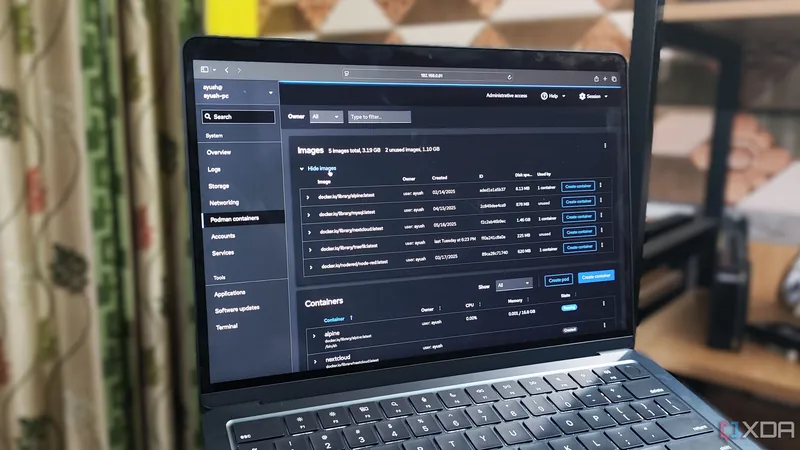
Why Cockpit is My Top Choice for Managing Podman Containers
2025-06-02
Author: Rajesh
As a long-time Docker enthusiast, I enjoyed its user-friendly interface and extensive features. However, after switching to Podman as my primary container runtime, I’ve uncovered a wealth of benefits that have transformed my container management experience.
Unlike Docker, Podman offers enhanced security, seamless systemd automation, and the ability to run containers in grouped pods. Given my new direction, I wanted a fresh approach to managing my containers and turned to Cockpit – an experience that has proven to be incredibly valuable.
4 Reasons Cockpit Simplifies Podman Management
Cockpit isn’t just about managing containers; it’s a comprehensive server administration panel that covers networking, storage, and logging. With the Cockpit-Podman add-on, I can effortlessly manage my Podman containers through Cockpit’s slick web interface.
This add-on provides a dedicated tab for Podman Containers, enabling me to adjust various container settings like storage volumes, port mappings, image repositories, environment variables, and network configurations. Plus, it features a built-in terminal that lets me check logs and execute commands easily.
3. Pods for Efficient Development Workflows
One of the standout features of Podman that swayed my decision was its pod architecture. Pods are fantastic for facilitating communication and resource sharing between closely related containers, making them ideal for my web development tasks.
For instance, I can keep my database, reverse proxy, and application containers in a single pod while isolating them from other services. With Cockpit-Podman, managing these pods is smooth and efficient, especially when I need to swap in different containers without hassle.
2. Seamless Integration with Kubernetes
DevOps enthusiasts rave about Kubernetes, and for good reason – its auto-scaling and high-availability features are cutting-edge. Thankfully, Cockpit provides easy management of both Podman containers and Kubernetes pods, making it a powerful tool for developers.
Moreover, it can integrate with OpenShift, enhancing its usability for those looking to leverage Red Hat’s cloud capabilities.
1. Comprehensive Resource Monitoring
Monitoring resource usage is critical, especially when running multiple containers on low-power devices like Raspberry Pis or mini-PCs. Cockpit excels in this area by providing robust monitoring tools that help me stay on top of system resources.
This is essential for maintaining performance, particularly when I’m running virtual machines alongside my Podman containers. With Cockpit, I can easily visualize resource consumption and avoid performance degradation.
In summary, Cockpit stands out as a versatile dashboard that enhances my self-hosting projects while making Podman management a breeze.



 Brasil (PT)
Brasil (PT)
 Canada (EN)
Canada (EN)
 Chile (ES)
Chile (ES)
 Česko (CS)
Česko (CS)
 대한민국 (KO)
대한민국 (KO)
 España (ES)
España (ES)
 France (FR)
France (FR)
 Hong Kong (EN)
Hong Kong (EN)
 Italia (IT)
Italia (IT)
 日本 (JA)
日本 (JA)
 Magyarország (HU)
Magyarország (HU)
 Norge (NO)
Norge (NO)
 Polska (PL)
Polska (PL)
 Schweiz (DE)
Schweiz (DE)
 Singapore (EN)
Singapore (EN)
 Sverige (SV)
Sverige (SV)
 Suomi (FI)
Suomi (FI)
 Türkiye (TR)
Türkiye (TR)
 الإمارات العربية المتحدة (AR)
الإمارات العربية المتحدة (AR)